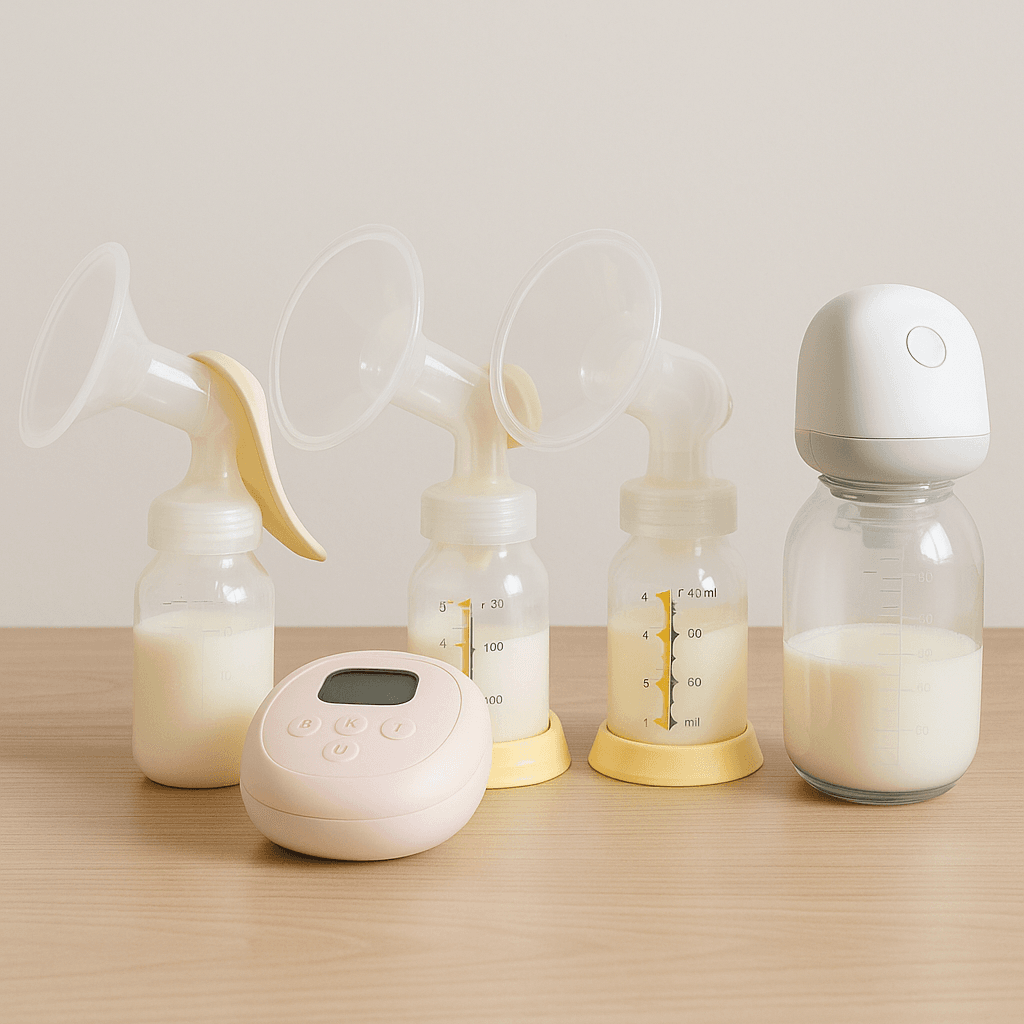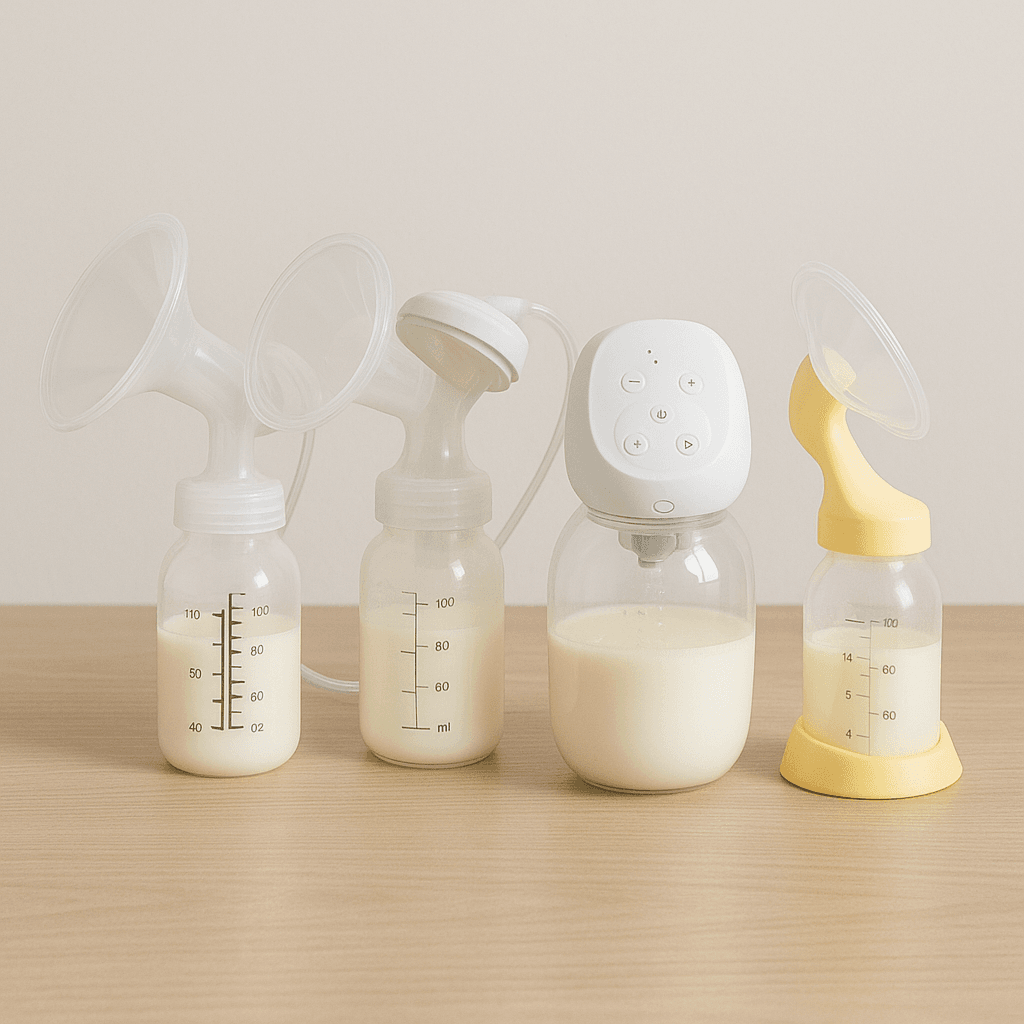For many breastfeeding mums, time is one of the biggest challenges—especially when you’re at work or juggling a busy schedule. Between meetings, errands, and caring for your baby, finding 20–30 minutes to pump can feel almost impossible. That’s where learning fast pumping techniques can really help.
The good news is that efficient pumping doesn’t mean compromising on milk supply or comfort. With the right tools, preparation, and methods, you can make the most of even the shortest breaks. Using a top rate breast pump that combines strong yet gentle suction, adjustable speed, and comfort can help you express milk more quickly and effectively—allowing you to stay consistent with your pumping schedule without feeling rushed.
What to Prepare for a Quick Pumping Session
Preparation is key to making each session smooth, efficient, and stress-free. A few simple steps before you start can save you valuable minutes—and help increase milk flow.
1. Choose the Right Pumping Location
Find a private, comfortable, and quiet space. If you’re at work, use your designated lactation or wellness room. Reducing stress and distractions helps your body relax, which encourages faster milk flow.
2. Wear Accessible Clothing
Choose nursing-friendly tops or dresses with front openings. This saves time when setting up and makes hands-free pumping easier.
3. Pre-Assemble Your Pump
If possible, put your pump parts together beforehand and keep them in a clean container or sealed bag. Having everything ready avoids last-minute delays.
4. Keep Cleaning Supplies Handy
Have disinfectant wipes, paper towels, and resealable bags on hand to store used parts between sessions if you can’t wash them immediately.
5. Stay Hydrated and Relaxed
Drink a glass of water before you start. Good hydration supports milk production, while deep breathing or a few calm moments help trigger your let-down reflex.
How to Set Up Your Breast Pump
Your setup determines how quickly and comfortably you can express milk. The goal is to minimise transition time while maximising comfort and suction.
1. Use a Double Electric Pump
A double electric pump is one of the most effective fast pumping methods. It allows you to express milk from both breasts at the same time, cutting your pumping time in half.
2. Check the Fit of Your Flanges
Flanges that are too large or too small can slow milk flow and cause discomfort. Make sure the flange fits snugly around your nipple without pulling in too much of the areola.
3. Adjust Suction and Speed Settings
Start with faster, lighter suction to mimic your baby’s early sucking pattern, which stimulates let-down. Once milk begins to flow, switch to slower, deeper suction to maximise milk output.
4. Use a High-Quality Breast Pump
Investing in a reliable breast pump saves time and effort. Look for features such as:
- Strong yet comfortable suction – helps express milk efficiently without pain.
- Adjustable modes – easily switch between stimulation and expression.
- Hands-free and portable design – ideal for multitasking.
- Quiet operation – reduces stress and allows discreet pumping.
5. Use a Hands-Free Pumping Bra
A hands-free bra keeps the flanges in place, freeing your hands to massage your breasts, type, or relax during the session. Gentle compression or massage can also help speed up milk flow.
Other Tools and Tips for Fast Pumping
Beyond the pump itself, certain accessories and habits can make each session quicker and more productive.
1. Warm Compress or Massage Before Pumping
Applying a warm compress or using a lactation massager can stimulate milk flow and help prevent blocked ducts. Gently massaging your breasts for two to three minutes before pumping encourages faster let-down and increases output.
2. Try “Power Pumping” Occasionally
Power pumping mimics cluster feeding and can boost milk supply. Pump for 10 minutes, rest for 10 minutes, and repeat this cycle for an hour once or twice a week. Over time, your body adjusts to release milk more efficiently.
3. Relax Your Body
Stress is one of the biggest inhibitors of milk flow. Listen to calming music, watch videos of your baby, or take a few deep breaths. Even a short moment of relaxation can noticeably improve output.
4. Keep Everything Within Reach
Set up your pumping space so wipes, bottles, and milk bags are all close by. The less you need to move around, the faster your session will be.
5. Store Milk Smartly
Instead of transferring milk between multiple containers, pump directly into storage bags compatible with your breast pump. This reduces spillage and saves cleaning time.
How to Clean Your Pump Parts Quickly
Cleaning your pump thoroughly ensures hygiene while saving precious time. Here’s how to simplify the process:
1. Rinse Immediately
After each session, rinse the parts in warm water to remove milk residue. This prevents build-up and makes cleaning easier later.
2. Use Wipes or Sterilising Bags
If you can’t wash the parts straight away, use disinfectant wipes or place them in microwave sterilising bags. These are ideal for the workplace or travel.
3. Try the “Fridge Hack”
Between sessions, put rinsed parts in a clean, sealed bag and store them in the fridge. This prevents bacterial growth and allows you to reuse them later without a full wash.
4. Clean Thoroughly Once a Day
At home, wash the parts in warm, soapy water, rinse well, and air-dry on a clean towel. Sterilise daily—especially if your baby is under three months old or has health concerns.
5. Keep a Spare Set
Having a spare set of pump parts saves time if one set is drying or misplaced. It also helps you stay on schedule during busy days.
Practical Example: The 15-Minute Pumping Routine
Here’s how a quick session might look using fast pumping techniques:
- Minute 1–2: Wash hands, assemble the pump, and get comfortable.
- Minute 3–5: Apply a warm compress and gently massage breasts.
- Minute 6–10: Start pumping in stimulation mode, then switch to expression once milk flows.
- Minute 11–13: Continue pumping while gently compressing the breasts to encourage milk release.
- Minute 14–15: Detach pump, seal milk bag, wipe parts, and store milk safely.
With practice, this short routine can produce almost the same amount of milk as a longer session.
Conclusion
Finding time to pump while working or managing family life can be challenging—but it’s not impossible. By using fast pumping techniques, you can make every minute count. Investing in a high-quality breast pump, keeping your setup organised, and learning quick cleaning methods all contribute to shorter, more productive sessions.
Even short, focused sessions can help maintain your milk supply and give you the flexibility you need as a busy mum. With the right tools and habits, you can pump smarter—not harder—and still provide the nourishment your baby deserves.



